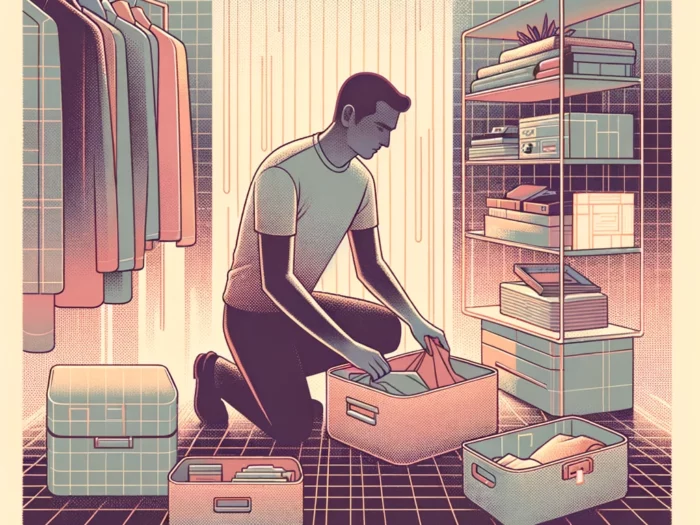In today’s digital age, where information is constantly at our fingertips, many of us have unconsciously adopted a habit of skimming through texts, seeking instant gratification and quick answers. The vast ocean of online content has conditioned us to move rapidly from one piece of information to the next, often without truly digesting what we’ve read. Amidst this whirlwind of rapid content consumption, a counter-movement is emerging: the art of slow reading.
This approach encourages readers to take their time, savoring each word and truly understanding the material, much like one would savor each bite of a gourmet meal.
- The Origins of Slow Reading – What Is Slow Reading?
- The Benefits of Slow Reading
- Techniques to Cultivate the Habit of Slow Reading
- The Role of Physical Books in Slow Reading
- Digital Detox: Reducing Screen Time for Better Reading
- Engaging with the Text: Beyond Just Reading
- Slow Reading in Education
- Overcoming the Challenges of Slow Reading
The Origins of Slow Reading – What Is Slow Reading?
Historically, reading was a luxury. In ancient civilizations, manuscripts were rare and precious, and the act of reading was a deliberate, often communal activity. As books became more accessible, particularly after the invention of the printing press, reading practices began to evolve.
However, it was the advent of the digital age, with its smartphones, e-readers, and endless streams of online content, that dramatically shifted our reading habits. Technology, with its notifications, hyperlinks, and multimedia distractions, has undeniably influenced our reading speed and depth of comprehension. While it has made information more accessible, it has also fostered a culture of surface-level engagement with texts.
The Benefits of Slow Reading
Embracing slow reading offers a myriad of benefits that go beyond just understanding the text. For one, it significantly enhances comprehension and retention. By taking the time to ponder over each sentence, we allow ourselves to absorb the nuances and intricacies of the text, leading to a richer reading experience.
Moreover, slow reading fosters a deeper emotional connection with the material. Whether it’s a novel, a poem, or even a non-fiction piece, immersing oneself in the text allows for a more profound engagement with the author’s emotions, intentions, and underlying messages. It’s akin to having a deep conversation with a friend, where you’re truly present and listening, as opposed to a hurried chat filled with distractions.
Lastly, in our fast-paced world filled with constant stimuli, slow reading serves as a form of mindfulness. It’s a meditative act that requires focus and presence, helping reduce stress and anchor us in the moment. Just as we’re encouraged to practice mindfulness in our daily activities, bringing this intentionality to our reading can be a source of relaxation and mental rejuvenation.
Techniques to Cultivate the Habit of Slow Reading
Incorporating slow reading into our daily lives requires intentionality, especially when we’re surrounded by a culture that often prioritizes speed over depth. Here are some techniques to help cultivate the habit of slow reading:
- Setting Aside Dedicated Reading Time: Just as we might schedule time for exercise or meditation, it’s beneficial to carve out specific blocks of time dedicated solely to reading. This could be a quiet half-hour in the morning with a cup of coffee or a nightly ritual before bed. Having a set routine can help reinforce the habit.
- Creating a Conducive Reading Environment: Find a comfortable spot free from distractions. This might be a cozy corner of your living room, a dedicated reading nook, or even a local park. The key is to choose a place where you can immerse yourself in the text without the constant pings of notifications or other interruptions.

- Using Tools to Enhance Engagement: Engage with the text actively. Annotations, highlighting key passages, and jotting down thoughts in the margins or a separate notebook can deepen comprehension and make the reading experience more interactive. These practices not only help in retaining information but also in reflecting on the material’s personal significance.
The Role of Physical Books in Slow Reading
In the digital age, e-readers and audiobooks have their merits, but there’s something inherently grounding about the experience of reading a physical book.
- The Tactile Experience: Holding a book, feeling its weight, and turning its pages connects us to the act of reading in a tangible way. This physical engagement can influence our reading pace, encouraging us to slow down and savor each page.
- Seeing Progress: There’s a psychological satisfaction in seeing the progress we make as we move through a book. Watching the left side grow thicker as the right side thins provides a sense of accomplishment and can motivate continued engagement with the text.
Digital Detox: Reducing Screen Time for Better Reading
While digital platforms offer convenience and accessibility, they also come with challenges, especially when it comes to reading.
- Effects of Screen Fatigue: Prolonged screen time can lead to eye strain, headaches, and reduced comprehension. The backlighting of screens and the tendency to scroll quickly can hinder the immersive experience that slow reading promotes.
- Balancing Digital and Physical Reading: It’s essential to find a balance that works for you. If you enjoy e-books or audiobooks, perhaps designate certain times for those and other times for physical books. Consider taking regular breaks if reading digitally, and perhaps even challenge yourself to occasional digital detox days where you only engage with physical texts. This balance can help mitigate screen fatigue and promote a more intentional reading approach.
Engaging with the Text: Beyond Just Reading
Reading is not just a passive activity where words flow from the page into our minds. To truly immerse ourselves in a text and extract its deeper meanings, we must actively engage with it. Here’s how:
- Rereading for Deeper Understanding: On my first read of a novel, I often get swept up in the plot, eager to find out what happens next. But when I revisit that same book, I notice the nuances, the symbolism, the intricacies of character development that I might have missed initially. Rereading allows us to dive deeper, to savor the text, and to uncover layers we might have overlooked the first time.
- Discussing in Reading Groups or Book Clubs: There’s something magical about discussing a book with fellow readers. Everyone brings their own perspectives, interpretations, and personal experiences to the table. I’ve often found that my understanding of a text expands and deepens after a lively book club discussion. It’s a reminder that literature is a shared experience, a conversation between the author, the text, and the reader.

- Writing Reflections or Reviews: After finishing a particularly impactful book, I like to jot down my thoughts. This could be in the form of a personal reflection, considering how the text resonated with my own experiences, or perhaps a more formal review. Writing helps consolidate understanding, and articulating our thoughts can lead to greater clarity.
Slow Reading in Education

In our fast-paced educational environments, where students often juggle multiple assignments and readings, the value of slow reading can sometimes be overlooked. But here’s why it should be an integral part of the curriculum:
- Teaching Slow Reading Techniques in Schools: When I think back to my school days, I remember the pressure of skimming through texts to extract relevant information quickly. But what if we taught students the art of slow reading? Encouraging them to take their time, to savor each word, to reflect on the text’s deeper meanings. This approach could foster a genuine love for reading and promote a more profound understanding of the material.
- Enhancing Critical Thinking and Analytical Skills: Slow reading isn’t just about pace; it’s about depth. By delving deeper into texts, students can develop their analytical skills, discerning themes, motifs, and character developments. This kind of in-depth analysis fosters critical thinking, a skill that is invaluable not just in academic settings but in life.
Overcoming the Challenges of Slow Reading
In today’s world, where we’re inundated with a constant stream of information, articles, and books, the idea of slow reading might seem counterintuitive. How can we possibly keep up if we’re taking our time with each text? Here’s how to navigate these challenges:
- Addressing the Fear of Missing Out (FOMO): I’ll admit, I’ve often felt the pressure to read the latest bestseller, the trending article, or the book everyone’s talking about. But over time, I’ve realized that reading isn’t a race. It’s okay to miss out on some content if it means truly engaging with and appreciating what we do choose to read. Remember, quality over quantity.
- Transitioning from Fast to Slow Reading: If you’re used to skimming articles or rushing through books, transitioning to slow reading can be a challenge. Start small. Dedicate a specific time each day for intentional reading, even if it’s just for 10 minutes. Gradually increase this time as you become more comfortable with the practice. And remember, it’s not about how many pages you turn, but the depth of your engagement with each page.
Conclusion
In our fast-paced digital age, slow reading might seem like a luxury. But in reality, it’s a necessity for those who truly want to connect with and understand the texts they read. I urge you, dear reader, to give it a try. Set aside some time, pick up a book, and lose yourself in its pages. Embrace the art of slow reading, and discover the profound joy and benefits it can bring to your life. Remember, in reading, as in life, sometimes slower is better.









